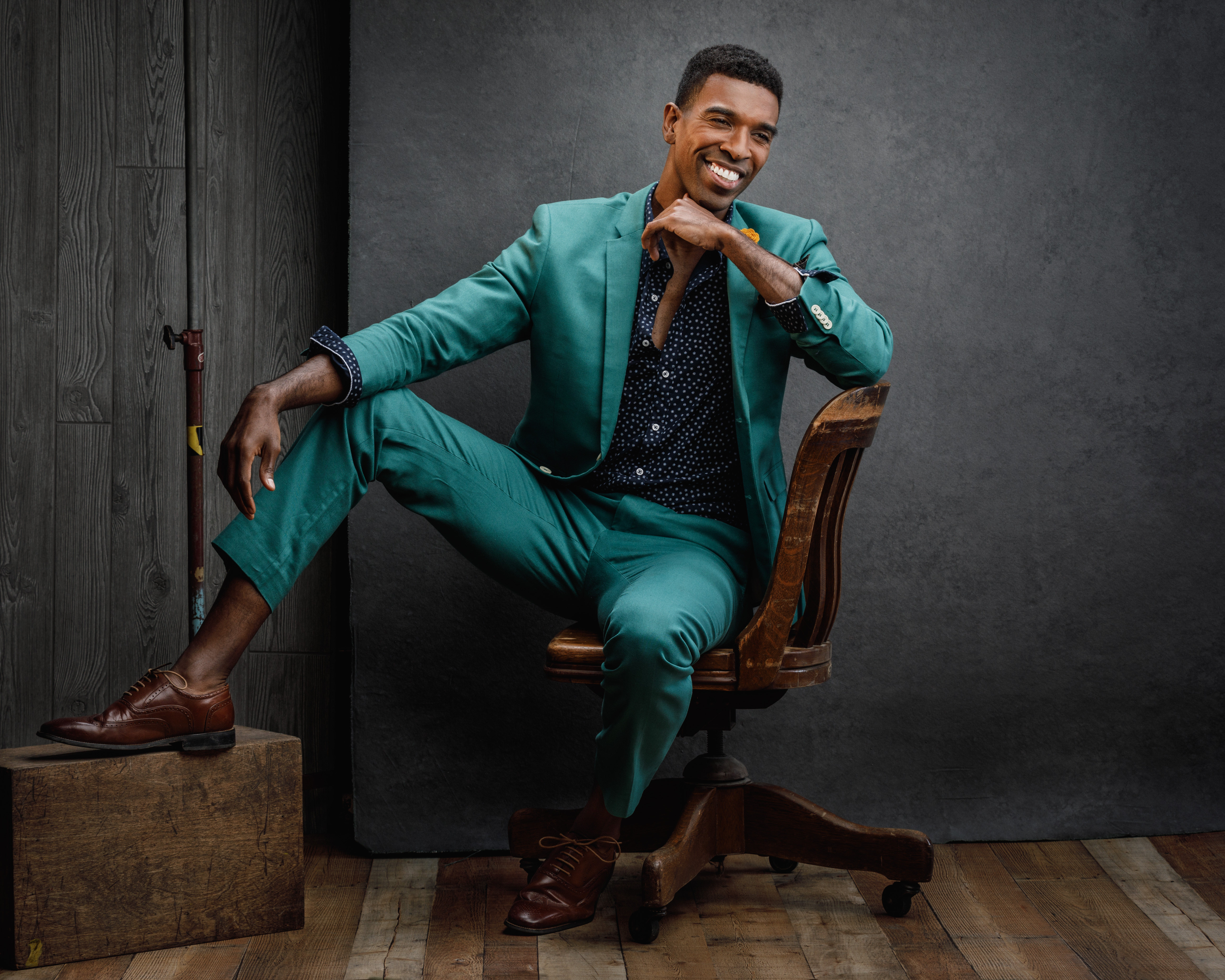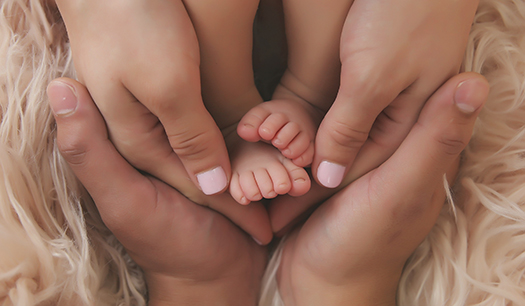News + Features
Perfect light and intriguing models can go a long way in making a beautiful portrait, but a photographer’s confidence in direction and posing can make or break a shoot. Without the right guidance, a promising shoot can quickly become limited, with images that don’t match the photographer’s vision or capitalize on their clients’ strengths.
As wedding and portrait photography rebounds from the upheaval of 2020, Rangefinder and WPPI are offering photographers monthly educational content to reset their businesses. This month, we’re tackling the ins and outs of posing.
We recently surveyed nearly 450 photographers in the U.S. and abroad on the ways they prefer to pose their subjects, how their approach changed this past year, and how they learn new techniques. Out of the respondents—of which 80% identified as a professional photographer—45% shoot portrait work, 12% shoot weddings and 43% shoot a combination of the two. Age groups and experience levels were fairly evenly distributed from 25 to 65 years old or older, and from less than 5 years experience to over three decades.
We found that photographers’ top posing concerns were the subject’s confidence and posture, followed by their emotion and expression, and lastly their physique. Beyond the usual concerns, the COVID-19 pandemic presented even more challenges, with photographers having to get extra creative—and loud—to direct from a distance and from behind a mask.

Over half of respondents said that COVID-19 guidelines had affected their ability to pose and interact with their subjects. Only 8% tried virtual shoots, which means the vast majority had to adopt social distancing practices while on location. While some expressed frustration with the changes, 82% agreed that they will continue to use the lessons they learned this past year in future shoots.
“I always relied on touch to help pose my clients,” one photographer told us. “[The pandemic] forced me to learn to use my voice to guide my clients. It’s been a huge transition, and one that has 100% made me better at posing.”

Three-quarters of photographers use verbal cues
An overwhelming majority of 76% respondents prefer using verbal cues, with only 12% favoring light touch or other physical cues. However, many photographers told us they also prefer to mirror the pose for the subject—or have their assistant demonstrate—a skill even more critical in the past year.
“Mirroring posing has become a critical way for me to show my clients and models how to position themselves,” one photographer said. Even in non-pandemic times, it can be a crucial approach for little ones, who may find mimicking easier than taking direction.
“Light touch and verbal cues can confuse them,” another photographer offered. “I like to mirror the pose for them and have them copy me.”
While you’re directing, make sure you’re not just focused on the posing, but on making your subjects feel comfortable and confident as well. Breaking the ice with small talk is best, according to those surveyed. Nearly half said that casual conversation during the shoot is the best method, followed by over a quarter who responded that words of encouragement is their favored approach. The least popular option? Showing your clients the images as they are being taken on the back of your digital camera.

The majority of photographers pose subjects according to their gender
Photographers who responded were far more likely to tailor their direction according to the subject or subjects’ gender—79% to be exact, while 21% use a unisex approach. (For a breakdown of the photographers who responded, 48% use he/him pronouns, 38% use she/her, 3% use they/them and 11% declined to answer.)
The respondents generally believe that the most interesting way to pose a woman was using exaggerated angles, while that option ranked last for men. The respondents prefer to photograph both women and men standing instead of sitting, but they favor action shots for men over women.
Photographer John Gress has previously written for Rangefinder that he likes his male subjects to take up as much space in the frame—it’s the only time when “manspreading” is permissible, he says. (Read Gress’ tips for posing men here and sign up for his webinar on March 17 at 4:00 P.M. EST entitled Transitioning from Window Light to Flash.)

But for same-sex couples, traditional ideas on posing should go out the door. Photography duo Thea Dodds and Kathryn Hamm emphasize that some of the standard trends and poses in wedding photography won’t necessarily work.
“Traditional wedding posing relies on basic assumptions built around masculine and feminine gender roles, and expectations of the physical differences between a man and a woman,” they write. “Simply put, plugging a same-sex couple into a pose designed for an opposite-sex couple could be awkward at best and offensive at worst.” That means leaving all assumptions at the door about how each person in the couple identifies, communication about comfort levels for PDA and creating balanced compositions for mixed-gender wedding parties (See Dodd and Hamm’s guidance here.)

Natural-looking portraits have the upper edge
We found that over half of photographers said they prefer natural or less-directed posing—which, like most things that look effortless, can take years of practice and different approaches to achieve. Natural-looking doesn’t necessarily mean fully candid—52% of respondents prefer a controlled approach.
Images that look deceptively unposed require different strategies depending on the type of photography. Boudoir photographer Jen Fairchild asks her subjects to “hang out for a second” while she sets her exposure, then snaps some shots when they relax into a natural stance. She also asks them to take deep breaths, resulting in sensual, but relaxed photos. (Read Fairchild’s six tips for natural boudoir poses here.) Meanwhile, portrait photographer Elena S Blair has a toolkit of poses that she regularly uses for family sessions that keeps her subjects in motion and connected, from having them tickle one another, to asking them to dance in a line. (See all five techniques here.)
“Without a sense of connection, you are simply capturing the pose and the outfits,” Blair writes. “Perceivable connection gives family photos a human feel and it makes everything within the photos look more genuine.”

For engagement shoots, wedding photographer Jen Huang says most couples start out nervous, so she recommends getting them comforting by getting uncomfortable.
“Instead of starting with simple poses, I actually ask them to do something they may find uncomfortable or challenging,” she writes. “For example, I might ask the groom to dip the bride and give her a kiss. The dip itself may not look great, but the moments before and after result in silly giggles and laughter, or even hugs as they support each other. That’s when the real, worthwhile moments can be captured.” (See Jen Huang’s posing approach here.)

Posing babies, children and teens
The trend toward natural-looking images continued with newborn and baby photography, with two-thirds of respondents saying they preferred lifestyle images over props and décor.
But posing babies comes with its own set of challenges, as they will need to feed, sleep and likely get fussy during the session. Photographer Ana Brandt has written for Rangefinder on prepping and posing for newborn shoots (read here), while Stephanie Cotta has given advice for newborn twins (read here).
With children, photographers said the biggest challenge was keeping them focused, followed by their energy levels, which tend to wane during a photo shoot.
Many photographers, however, were less concerned with posing children or keeping them still, with one respondent saying, “I like to let them be. Children are beautiful when they are naturally who they are. I find that letting them be goofy gets great candid images first, then they are comfortable enough with me to give us great expressions for posed shots after.”
Portrait photographer Tamara Lackey also splits up her time between directed and organic shots, but she leads with the former. “I start with a specific direction in mind but then let my subjects take over, adjusting so that the poses more reflect who they naturally are and how they naturally hold themselves,” she writes. (See Lackey’s four tips for posing kids here.)
For high school senior shoots, results were mixed about the best approach—as teenagers are definitely not a one-size-fits-all situation—but, as Hope Taylor has written for Rangefinder, their word-of-mouth advertising on social media is crucial to more business. Her advice for senior portraits includes building in extra time at the beginning to build rapport, and playing with their eye direction to get the most effective shots (See her three tips here.)
Online education reigns
It’s no surprise that for new posing approaches, photographers turn to the internet. Nearly half (49.8%) of respondents—who could choose more than one option—said they learn techniques from photography websites, versus 36.5% who listed print magazines. Nearly half chose online education, though accessible video and social media platforms like YouTube and Instagram were popular as well (TikTok, at only 2.6%, doesn’t appear to have captured this part of the market just yet).
But learning directly from people has its advantages too, with workshops and learning from colleagues or friends scoring high as well. Having a good network of friends helps on set as well, with nearly half of respondents saying that they prefer to try new poses on friends, versus less than a third who prefer models.

Related Articles:
Trend Report: Photography Business and Copyright Trends







